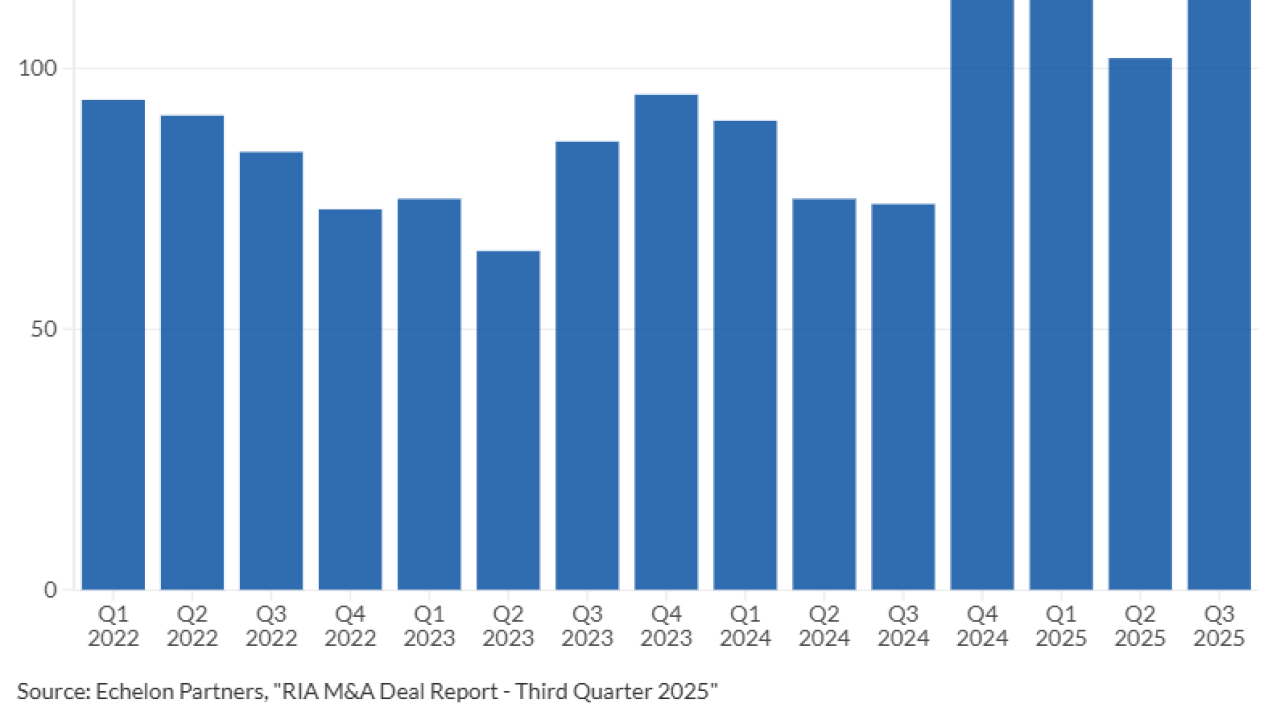An important new tool has been proposed for planners seeking to help their clients manage the pace of distributions from their retirement accounts and to ease their fears about outliving their life expectancy. In February, the IRS released proposed regulations about the establishment of "qualified longevity annuity contracts." The new rules will allow retirement account owners to purchase certain annuity contracts with a portion of their retirement assets that can then be excluded from their required minimum distribution calculations.
Annuity payments, which are the only distribution option available from these contracts, will be required to begin by the owner's 85th birthday. The primary purpose behind the creation of the contracts is to help taxpayers in hedging their longevity risk by making it easier for them to purchase certain annuities with their retirement accounts. Qualified longevity annuity contracts do not currently exist, and the rules and guidelines now being discussed are subject to change in the final version of the regulations.
COMING SOON
The preamble of the proposed regulations states that an annuity will be considered a qualified longevity annuity contract only if it is purchased after the proposed regulations are finalized. This is true even if a contract meets all of the other rules and regulations. The proposed regulations do indicate, however, that once final regulations have been published, qualified contracts will be excluded from required minimum distribution calculations beginning in 2013, so there's a good chance the final version of the regulations will be released before the end of this year.
Until now, the biggest obstacle to owning annuities that begin making payments at an advanced age such as 80 or 85 within IRAs and other retirement accounts has been the minimum distribution rules. They require that, unless an annuity held within a retirement account has already been annuitized, its fair market value must be included when calculating distributions.
This creates some planning concerns. It reduces liquid IRA assets at an accelerated rate and, if the entire non-annuity IRA balance is exhausted before age 85, clients will be forced to begin receiving payments from the IRA annuity at that point in order to avoid any penalties for failing to take required minimum distributions.
Under the proposed regulations, required minimum distribution issues will no longer be a concern for certain annuity contracts. Clients purchasing longevity annuities that meet the requirements can exclude the value of the annuity from their required minimum distribution calculations.
HOW THEY WORK
Under the proposed regulations, annuity distributions from qualified contracts may be deferred, but only until the first day of the month after the person's 85th birthday. The regulations do not contain any restrictions preventing these contracts from offering owners the option of starting distributions at an earlier age, but doing so would probably increase the cost of a contract.
The amount of retirement assets an individual can invest in annuity contracts will be limited to the lesser of $100,000 or 25% of retirement account assets. The $100,000 figure is a cumulative limit for all contracts purchased in all retirement accounts.
As for the 25% ceiling, that limit will be applied to the total value of all of a client's IRAs except Roth IRAs, using the prior year-end balance. For other plans, the balance used to determine the 25% limit is the amount in the plan on the date the client buys the qualified longevity annuity contract.
The limits on purchasing annuity contracts apply to individual taxpayers, not to couples. That means a married couple could potentially invest up to $200,000 in contracts so long as each person has enough of his or her own retirement funds to do so.
THE DOWNSIDE
The ability to exclude the value of an annuity contract from requried minimum distributions will be a huge benefit for some clients, but they come with certain drawbacks. One disadvantage is that these products cannot be variable annuities or equity-indexed annuities.
Another key drawback of the contracts will be their somewhat irrevocable nature. A contract will not be able to offer "any commutation benefit, cash surrender value or other similar feature."
A third disadvantage for some clients will be the lack of death benefit options. The only permissible death benefit option is a life annuity, payable to a designated beneficiary. No additional options, such as return of premium, lump-sum benefits or period certain annuity payouts, may be offered.
In general, a spouse who is a sole beneficiary may receive a life annuity with payments equal to or less than what their deceased spouse was receiving or would have received if he or she died before receiving any benefits. But there is an exception to the rule if the surviving spouse is older than the deceased owner. In that case, a surviving spouse is allowed to receive a lifetime annuity with payments higher than the owner was receiving, but only to the extent necessary to satisfy ERISA preretirement survivor annuity rules.
This rule would apply only to contracts purchased in an ERISA-covered plan, such as a 401(k). If a surviving spouse is eligible to receive a death benefit, payments must begin by the time the contract owner would have had to receive payments, had he or she lived.
For a non-spouse designated beneficiary, payments must start by Dec. 31 of the year after the year of death. Contracts with non-spouse designated beneficiaries have to meet one of two specific guidelines laid out in the regulations.
The first option is an annuity that provides no death benefit if the owner dies before the annuity's start date. If the client has a contract under which payments were scheduled to begin at age 85 but he or she dies at 80, no death benefit is available for a non-spouse beneficiary. The second option does not require that the owner live past his or her annuity start date.
For contracts that offer the option of starting benefits before age 85, owners can opt to begin receiving payments sooner than they are obligated to do so, simply to get past the annuity start date in order to ensure a non-spouse beneficiary is able to receive a life annuity death benefit. But the regulations also state that if the owner starts an annuity earlier than the date specified in the contract, no death benefit will be paid to a non-spouse beneficiary if the owner dies within 90 days of starting the annuity.
Owners with this type of contract must irrevocably designate their beneficiaries as of their required beginning date: April 1 of the year after the year in which they turn 701/2. These designations are irrevocable, and there is no remedy to transfer the death benefit if a beneficiary dies before the contract owner. Since estates, charities and non-see-through trusts have no life expectancy, they may not receive death benefits under an annuity contract.
Qualified annuity longevity contracts will certainly not be the answer for every client, but when the proposed regulations are made effective, they will become another tool for consideration for many clients who are concerned about outliving their life expectancy.
All advisors, even those who won't personally offer such products, should ensure that they are aware of the rules, their benefits and their drawbacks. For many advisors, the opportunity to guarantee a significant stream of income at an advanced age, coupled with the ability to exclude the value of such an annuity from required minimum distribution calculations, makes these contracts a viable, beneficial and integral approach to meeting retirement and estate planning needs of clients.
Ed Slott, a CPA in Rockville Centre, N.Y., is an IRA distribution expert and the author of a monthly newsletter and several books about IRAs.





